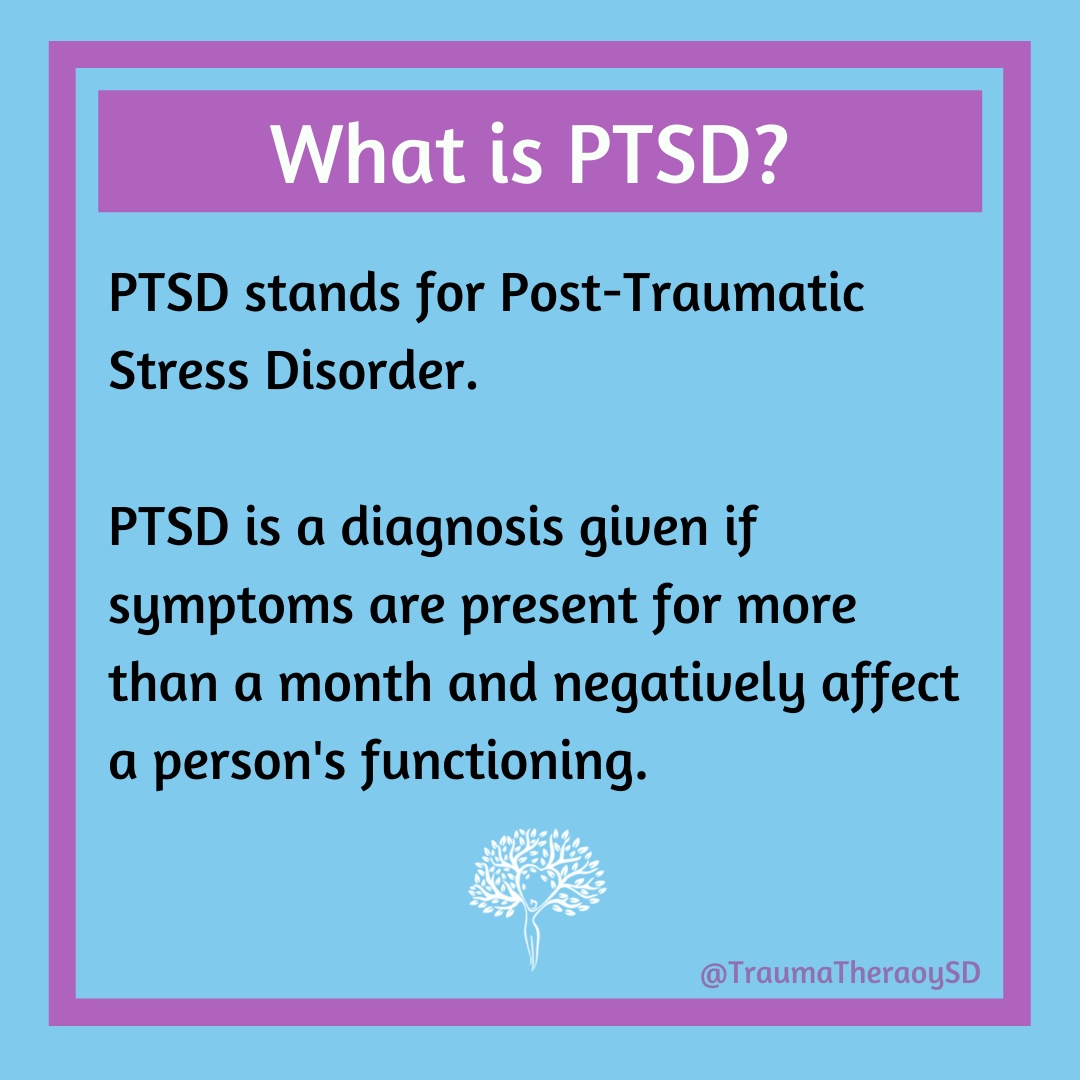What is PTSD?

PSTD stands for Post-Traumatic Stress Disorder. Many symptoms that eventually lead to a diagnosis of PTSD are common in the first month after a traumatic event. It is if they persist longer than that month, and they cause a disruption to a person’s normal functioning that we consider the diagnosis appropriate.
According to the DSM 5, PTSD can develop if you go through a traumatic event (for example being in a car accident), if you witness a traumatic event happening and is a diagnosis that comes after a trauma when many (witnessing the car accident), learning of the traumatic event happening to a close family member or friend, or repeated exposure to traumatic events (for example first responders).
That is the official definition for a diagnosis. But for therapists doing trauma work, what matters is if the event or experience was traumatic to you. Often things are experienced as traumatic as they are experienced as too much, too soon, too intense, etc. to our mind or nervous system.
Often PTSD can develop when the person who went through the traumatic event does not have the support to fully process what happened. If they are told it is their fault or to get over it, this can shut down the brain’s natural process of digesting the event so it no longer bothers us.
The symptoms of PTSD include intrusive memories of the event, avoidance of reminders of the event, negative changes in mood and thoughts due to the event, and increased levels of arousal and reactivity.










